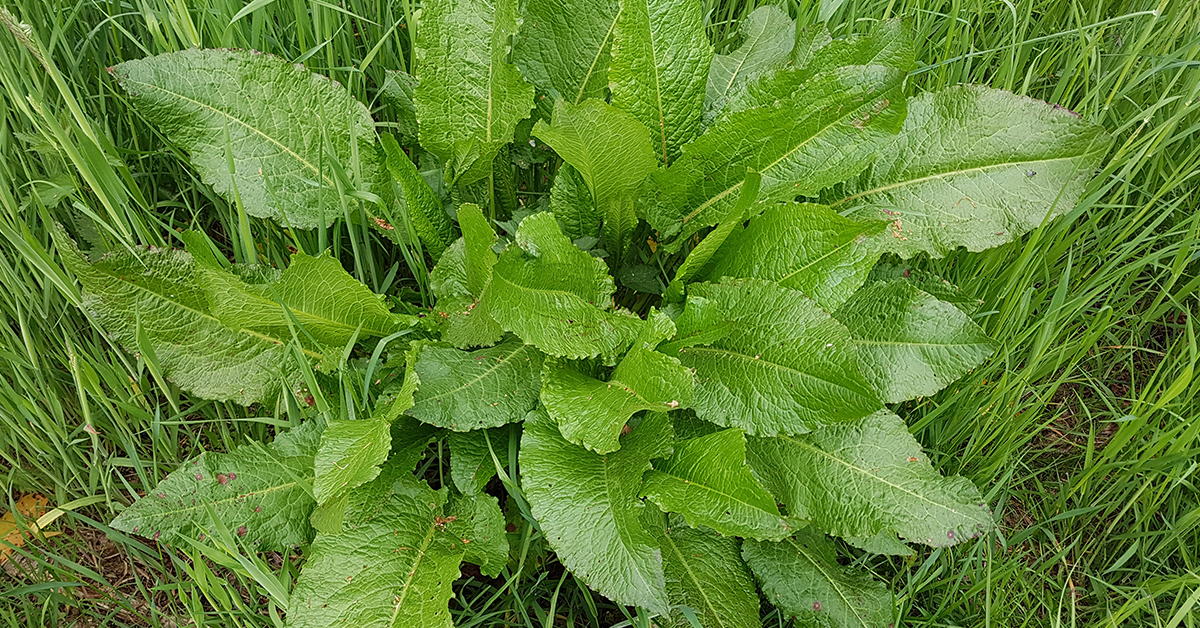In this monograph about yellow dock:
📖 Introduction | 🌱 Botanical Description | 📜 Traditional Uses | 🔍 Phytochemistry | ✨ Applications and Uses | 🛡️ Safety Profile
📖 Introduction
Yellow dock (Rumex crispus) is a perennial herb noted for its nutritional and medicinal properties, primarily recognized for supporting digestive health and skin conditions. This robust herb has been integral to traditional medicine systems due to its cleansing and detoxifying abilities.
| English Name | Yellow Dock |
| Latin Name | Rumex crispus |
| Parts Used | Root |
| Traditional Uses | Digestive aid, skin conditions, and detoxification |
| Herbal Actions | Laxative, hepatic, tonic |
🌱 Botanical Description
Scientific Classification
Rumex crispus belongs to the Polygonaceae family.
Physical Characteristics
Yellow dock features long, wavy-edged leaves and a distinctive tall stem that culminates in rust-colored seed clusters. The roots, the most used part of the plant, are yellow to brown and have a thick, fleshy appearance.
Natural Habitat and Cultivation Details
Yellow dock originated from Europe and parts of Asia but has adapted to various environments across North America. It thrives in poor soil and is often found in fields, along roadsides, and in other disturbed lands.
📜 Traditional Uses
Yellow dock roots have been historically used to stimulate bile production, enhance digestion, and purify blood. Due to their anti-inflammatory properties, they have also been used in folk medicine to treat a range of skin diseases, including rashes and psoriasis.

🔍 Phytochemistry (Active Constituents)
Yellow Dock contains a variety of active constituents that contribute to its therapeutic effects:
- Anthraquinones: Including emodin, known for their laxative and purgative properties, help relieve constipation and improve bowel movements.
- Tannins: Provide astringent properties that help reduce skin inflammation and treat various skin issues.
- Iron: Contains a moderate amount of bioavailable iron, contributing to its use in treating anemia, but should not be solely relied upon for significant iron supplementation.
✨ Applications and Uses
Yellow Dock is employed in herbal medicine for its benefits across several health areas:
- Digestive health: Yellow dock is commonly used to stimulate digestion, relieve constipation, and aid in detoxification.
- Skin care: Employed in treatments for skin inflammations and infections, its astringent properties help improve skin health.
- Anemia treatment: The iron content supports its use as a mild supplement in cases of iron-deficiency anemia, though it is not a primary treatment for severe anemia.
🛡️ Safety Profile
Yellow dock is generally safe when consumed in moderate amounts as part of a diet or herbal regimen.
However, due to its oxalate content, it should be used cautiously by individuals prone to kidney stones.
Overuse of yellow dock, especially parts containing anthraquinones, can lead to diarrhea or digestive disturbances.
Pregnant and breastfeeding women should avoid yellow dock due to potential laxative effects.
As with any herb, consultation with a healthcare professional is recommended, especially for those with existing health conditions or those taking medications.
